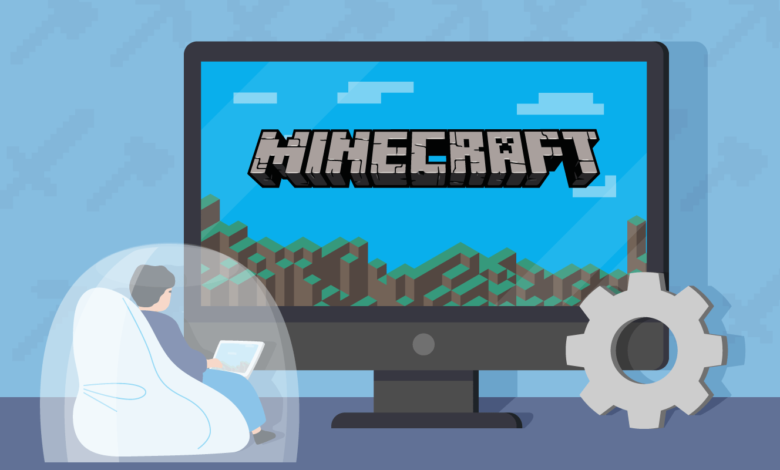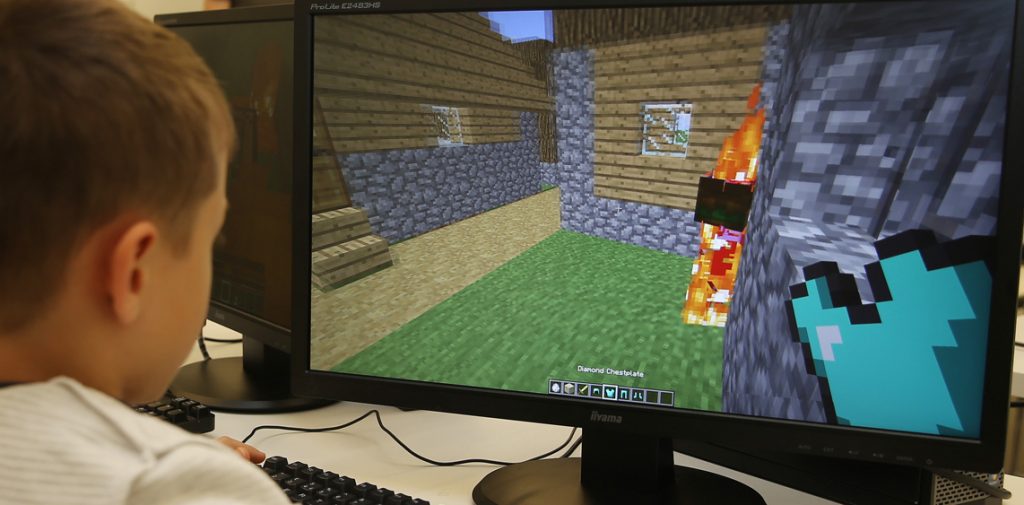Unlocking Minds, Building Futures: The Surprising Educational Power of Minecraft You Never Knew Existed!

In the dynamic digital landscape of today, where screens offer various forms of entertainment, parents play a crucial role in guiding their children’s screen time. Amidst the plethora of digital options, Minecraft emerges as a beacon of educational and recreational fusion. This open-world building-block game has captured the hearts and minds of millions, offering not just a gaming experience but a platform that nurtures various skills for children, teens, and pre-teens.

In a world where children navigate between virtual realms and real-life challenges, finding a balance becomes a parental concern. The Centers for Disease Control and Prevention (CDC) highlight the growing issue of childhood obesity, stating the importance of maintaining a healthy lifestyle. Simultaneously, the demand for digital literacy is rising, pushing children to engage with current technologies actively. Striking a balance between these two realms is where Minecraft steps in.
Researchers at Radboud University point out the positive impact of certain video games on children, citing benefits such as emotional regulation, strengthened social ties, and improved cognitive abilities. Minecraft, with its open-world structure and limitless possibilities, stands out as a game that seamlessly integrates entertainment with education.
Karen Carnes, Special Education Teacher, U.S., highlights that “my students have been able to practice task management skills, problem solving, and personal relationship skills. Being able to see them excited and engaged with their learning is priceless.”

Minecraft’s appeal lies in its simplicity and adaptability. Described as a limitless container of virtual LEGO blocks, the game’s open sandbox format allows players, both young and old, to explore boundless creativity. Avatars embark on resource-gathering quests, collecting materials that can be crafted into tools, circuits, trains, or even intricate houses. Recognizing its educational potential, MinecraftEdu, an academic organization, endorses the game for its adaptability to various curricula.
Unlike many video games with rigid rules and linear progressions, Minecraft fosters an open environment free from predefined quests. In survival mode, players grapple with loose survival requirements, such as securing shelter, feeding avatars, and fending off virtual adversaries like giant spiders and “Creepers.” Wired magazine notes that video games, including Minecraft, empower players to “overcome the fear of failure in real life,” instilling a sense of resilience and adaptability.

The boundless opportunities for creativity within Minecraft are undeniable. Children explore extensive cave systems, build lavish houses, and unleash architectural genius to create block cities inspired by real or fictional locations. The game’s structure encourages imaginative thinking, providing a virtual canvas where young minds can shape their ideas into tangible structures.
While Minecraft offers ample room for solo adventures, it also facilitates collaborative play. Families can establish personal servers, enabling friends and family to join the fun. Psychologists, recognizing the potential of video games to enhance social skills, states the importance of cooperation. Dr. Isabela Granic, in an American Psychological Association (APA) article, highlights studies indicating that players engaged in cooperative video games are more likely to exhibit helpful behaviors.
In the virtual realm of Minecraft, problem-solving becomes a natural part of gameplay. Children navigate challenges, experiment with resource combinations to craft tools, build shelters before nightfall, and strategize to feed their avatars. Research by S.R.I. International suggests that video game play contributes to measurable improvements in problem-solving and memory.
“I’ve seen firsthand how Minecraft can transform the way kids learn,” says Sarah Henderson, a teacher at a public school in New York City. “The game’s open-ended nature allows children to explore their creativity and develop problem-solving skills in a way that is both engaging and meaningful.”
Minecraft’s accessible entry point and scalable complexity make it a game for all ages. Parents can actively participate, turning virtual building and survival experiences into engaging family bonding exercises. This inclusive aspect distinguishes Minecraft as a shared space for collaborative play, fostering connections beyond the screen.
As children go deeper into the intricacies of Minecraft, they inevitably grapple with resource management. From manually acquiring wood to using tools like axes for efficiency, young players learn the economics of labor and resources. This virtual economy introduces them to the concepts of cost, wear and tear of tools, and the necessity of continual resource acquisition.
“I never thought I would see my kids learning so much while playing a video game,” said Emily Johnson, a parent of two kids who play Minecraft. “Minecraft has ignited a passion for learning in them and it’s amazing to see them apply the knowledge to almost everything they do .”
In the process of constructing virtual structures with Minecraft’s building blocks, children inherently enhance their spatial awareness and geometry skills. Understanding the possibilities inherent in the six faces of a cube and learning to stack blocks in structurally sound configurations contribute to a subtle form of geometric education.
A unique aspect of Minecraft is its vibrant community, where players share custom modifications, quest maps, artwork, and wiki entries. By encouraging young players to explore their ideas and contribute to the community, Minecraft becomes a platform for creative expression and collaboration. Exploring public servers, forums, and wiki guides together provides an opportunity for parents and children to engage in shared gaming experiences.
Minecraft’s versatility is reflected in its age-appropriate content, making it suitable for a wide range of ages. Rated for individuals seven and up by the Pan European Game Information (PEGI) and four and up for the iOS version, the game offers a safe and engaging space. Parents can further customize the experience by setting the game to “Peaceful” mode, eliminating encounters with monsters.
Embarking on a virtual journey within Minecraft holds the promise of a myriad of advantages for children. From honing problem-solving skills to fostering creativity and teamwork, the game’s educational potential is vast. As parents guide their children through the evolving landscape of digital experiences, Minecraft emerges not just as a game but as a dynamic tool shaping young minds for the challenges of the future.



